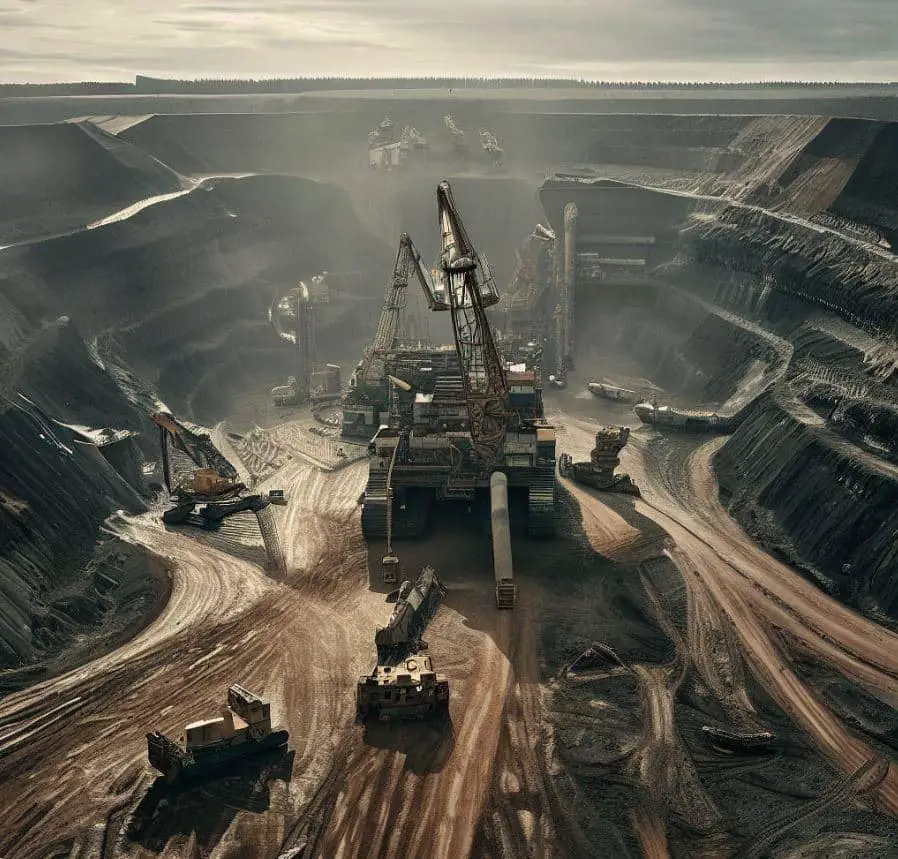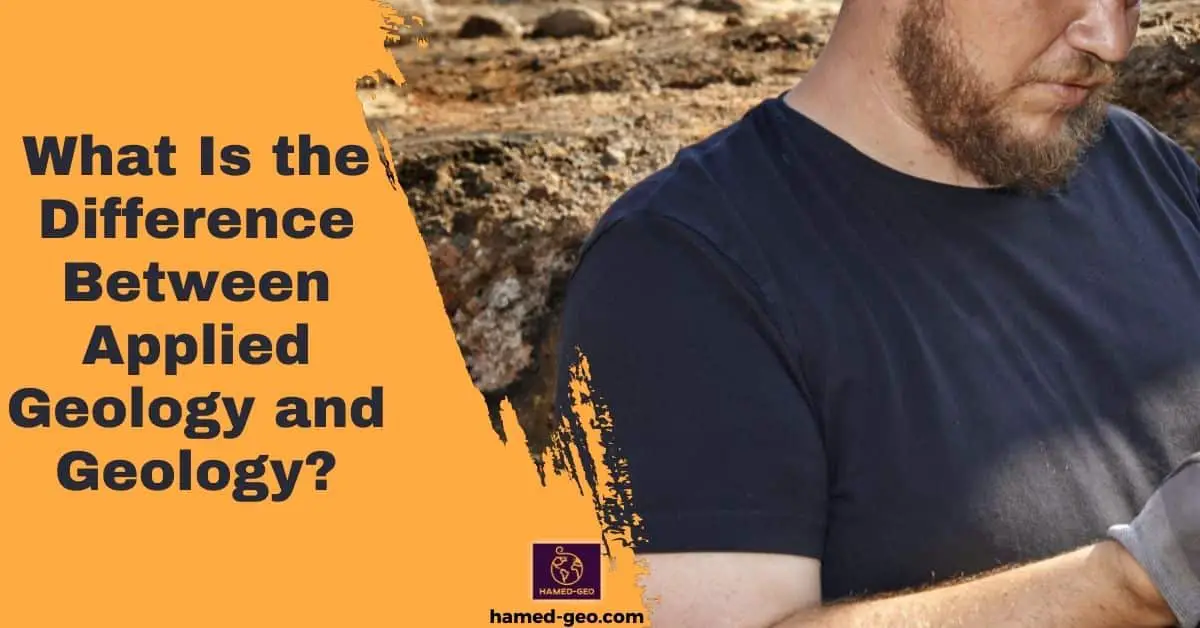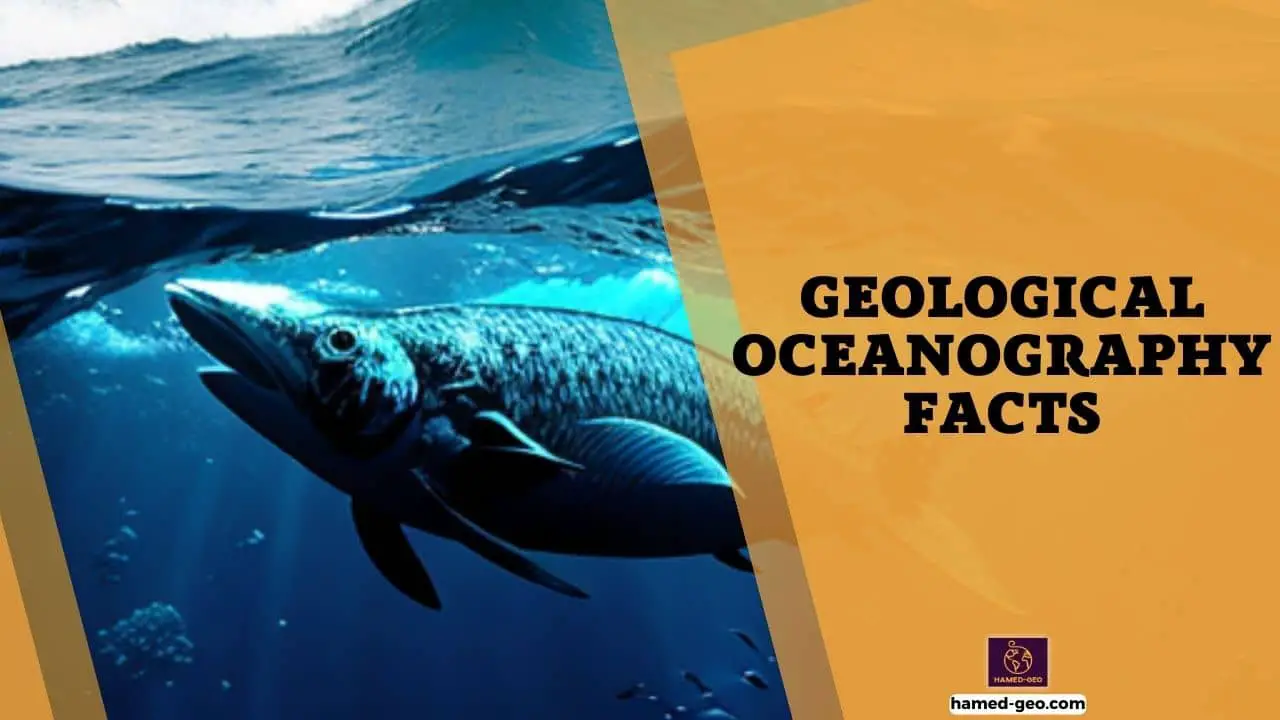Geology, an ancient field of study, is considered the bedrock of understanding the Earth’s history, its structure, and the processes that have shaped it over billions of years. This discipline provides a comprehensive understanding of earth materials, the structure of the earth, and the processes that act upon them. It also includes the study of organisms that have inhabited our planet. An understanding of geology implies an understanding of the chronology of Earth’s past, its geologic history, and the processes that have shaped the Earth, from the smallest grains of sand to the mountains.
On the other hand, applied geology is a sub-discipline that applies the principles of geology to solve human problems. This field significantly contributes to societal needs, including natural resource identification and extraction, environmental protection, and evaluating geohazards. Applied geology involves practical applications of geologic knowledge such as petroleum and mineral exploration, environmental consulting, hazard recognition and mitigation, and hydrogeology. The main difference between these two disciplines lies in their approach to the subject; while geology is more academic and fundamental, applied geology is more practical and problem-solving in nature.
| Geology | Applied Geology |
|---|---|
| Focuses on the study of Earth's history, structure, and processes | Applies geological knowledge to solve real-world problems |
| Primarily academic and theoretical | Practical and problem-solving in nature |
| Explores the Earth's components and processes | Targets specific problems related to earth resources and environmental issues |
| Involves a deep level of theory | Utilizes theoretical concepts for practical applications |
| Includes fieldwork and research | Involves more hands-on activities |
| Focuses on understanding the Earth and its history | Focuses on applying geology to benefit society |
| Examples include mineralogy, petrology, and structural geology | Examples include mining and exploration, environmental protection, and geological engineering |
The Differences Between Geology and Applied Geology
In discussing the disparities between Geology and Applied Geology, five key areas warrant attention. Firstly, the Application of Knowledge and Practices distinguishes the theoretical approach of geology from the practical focus of applied geology. Secondly, the Areas of Focus differ, with geology studying Earth’s components and applied geology targeting specific problems. Thirdly, the Level of Theory is more profound in geology. Fourthly, variations in Fieldwork Differences, with applied geology often involving more hands-on activities. Lastly, Industrial Applications are more prevalent in applied geology, providing solutions to industry-specific issues.
Application of Knowledge and Practices
Transitioning from the fundamental concepts of geology, it becomes crucial to delve into the nuanced differences between geology and applied geology, starting with the Application of Knowledge and Practices.
The distinction primarily lies in the practical implementation of theoretical knowledge. While geology is grounded in the understanding of the earth’s structure, processes, and history, applied geology takes a step further, leveraging these insights to solve real-world problems related to earth resources and environmental issues. It is the practical application of geology in areas such as engineering, environmental science, and mineral exploration.
Applied geology emphasizes the utilization of geologic knowledge and principles to the benefit of human society. For instance, the identification and assessment of groundwater resources, managing geological hazards, and the exploration and exploitation of mineral resources. Hence, the application of knowledge and practices in these two branches of geology differs significantly, with the latter being more solution-oriented and industrially inclined.
Areas of Focus
Moving right along, let’s delve into the distinct areas of focus in Geology and Applied Geology. Geology primarily involves the study of solid Earth, its rocks, and the processes by which they change. This field encompasses studying Earth’s history, its interior, and its surface. On the other hand, Applied Geology zeroes in on the practical application of geological knowledge to solve real-world problems. It concentrates on the study of geological hazards, resource management, and environmental challenges.
For instance, while geologists might be engrossed in understanding how mountains are formed, applied geologists might be more interested in how to prevent landslides in those mountainous regions. Hence, the focus areas of these two fields, despite being interrelated, are clearly defined based on the objectives and desired outcomes. Both areas of study, while different, are fundamental to understanding and preserving Earth and its resources.
Level of Theory
Transitioning from the foundational understanding of the two disciplines, it becomes crucial to delve into the level of theory involved. Both geology and applied geology rely heavily on theoretical knowledge. However, the depth and focus of this theory vary significantly between the two.
In geology, the focus is on obtaining a comprehensive understanding of all earth systems and their interrelationships. This involves a significant amount of theory, often exploring complex concepts such as plate tectonics, sedimentology, geomorphology, and geochronology. The aim is to understand the Earth’s history and its processes.
Conversely, applied geology utilizes these theoretical concepts but with a more targeted approach. It primarily focuses on practical applications of this theory to solve specific, real-world problems. Thus, while the theoretical foundation is similar, applied geology often necessitates a deeper understanding of certain areas, depending on the specific problem being addressed.
Overview of Geology
Starting with the definition of Geology, it is important to understand the discipline’s nature and scope. The several branches of Geology further diversify the study, each with its unique focus. Exploring the history of Geology provides a chronological perspective of how the understanding and practice of this field have evolved. Mineralogy, a crucial branch of Geology, offers deeper insights into mineral composition and structure. Lastly, the practice of geological mapping is fundamental for providing a visual and spatial representation of geological features. Geology encompasses a broad range of studies, all central to understanding Earth’s structure and processes.
Definition of Geology

Bridging the gap between the applied and fundamental, now let’s dive into a more comprehensive understanding of geology itself. The term ‘Geology’, derived from the Greek words ‘geo‘ meaning earth and ‘logia‘ meaning study, is the scientific exploration of the Earth’s solid matter including the processes that have shaped its structure over billions of years.
Geology is often viewed as the parent science from which many other Earth sciences have evolved. It is an amalgamation of several disciplines that work together to develop an understanding of our planet. Geology is concerned with understanding the Earth’s history, the physical and chemical processes that occur beneath and above the Earth’s surface, predicting future events, and searching for important resources. This broad discipline provides a foundation for understanding the world we live in and offers a framework for predicting and coping with natural disasters.
With knowledge of geology, humans can better predict, prepare for, and handle the impacts of catastrophic events such as earthquakes, volcanic eruptions, and landslides.
Branches of Geology
Moving on from the application of geology, picture a tree with its complex branches extending in all directions. Similar to this organic image, the field of Geology also branches into several specialized disciplines. The study of Earth’s solid material and processes can be broadly divided into the following branches: Physical Geology, Historical Geology, Mineralogy, Petrology, Geomorphology, Paleontology, Stratigraphy, and Seismology, among others.
Each branch offers unique insights into the geological characteristics and processes of the Earth. For example, Physical Geology deals with the study of the Earth’s solid materials and dynamic processes both on the surface and interior. On the other hand, Historical Geology delves into the Earth’s past climates, magnetic field shifts, plate tectonic movements, and more through the geological timescale. Similarly, Mineralogy focuses on the chemical and crystal structures of minerals, which are crucial for understanding Earth’s composition.
Here are more than 30 branches of geology with their definitions.
History of Geology
Having delved into the nuances distinguishing geology from applied geology, it is pertinent to explore the broader scope of geology itself, beginning with its historical evolution. Geology, a term derived from the Greek words ‘ge’ (earth) and ‘logia’ (study of), represents the scientific investigation of the Earth’s solid materials and processes.
The inception of geology as a science is traced back to ancient Greece, with Thales of Miletus hypothesizing about the earth’s composition. However, modern geology’s foundations were laid in the 18th century, during the Enlightenment period. James Hutton’s ‘Theory of the Earth’ in 1788, emphasizing the Earth’s deep history, served as the bedrock for the discipline.
In the 19th and 20th centuries, geology evolved significantly with the advent of plate tectonics theory, which reshaped our understanding of the Earth’s structure and its dynamic nature.
Applied Geology
Firstly, a clear understanding of Applied Geology is necessary. This will later lead to the exploration of the diverse areas where this branch of geology is applied. The numerous benefits that Applied Geology offers will then be discussed. Subsequently, its role in Geological Hazard Assessment and Natural Resource Exploration will be highlighted, emphasizing its importance in these crucial sectors.
Definition of Applied Geology
Moving from the broad scope of geology, let’s delve into a more specialized field – Applied Geology. This branch of geology is concerned with the practical application of geological knowledge to solve real-world problems. Applied Geology essentially involves the use of geologic data, principles, and techniques to address issues related to earth materials and processes.
In essence, it is the ‘application’ of geological science to the needs of society. This includes the study of soil, rock, groundwater, and naturally occurring minerals. Unlike pure geology, which is mostly theoretical, applied geology is highly practical and problem-solving in nature.
To put it simply, if geology is the study of the Earth’s history and structure, then Applied Geology is the use of that knowledge to benefit humanity. This branch of geology has a significant role in our everyday lives, providing solutions for a range of issues from natural disaster management to resource extraction.
Areas of Application
Diving deeper into the fascinating world of geology, one cannot help but marvel at its practical implications. The area of Applied Geology is a testament to this. Broadly, applied geology is employed in a variety of sectors. Urban planning is one such area, where geological knowledge is used to understand the ground conditions for infrastructure development. Geologists also play a significant role in environmental protection, assessing the impact of human activities on geological environments and devising remedial measures.
In the realm of water resources management, geological knowledge aids in identifying water-bearing zones and managing groundwater resources effectively. Similarly, in the construction industry, applied geology provides insights into the selection of suitable sites, material choice, and hazard identification. Furthermore, applied geology is critical in the mining and petroleum sectors where it guides the extraction of minerals and hydrocarbons. Lastly, it is instrumental in hazard management, informing strategies to mitigate natural disasters like earthquakes and landslides.
Benefits of Applied Geology
Delving deeper into the realm of geology, one uncovers the practical and beneficial aspects of this scientific study, commonly referred to as Applied Geology. This field is characterized by the application of geological knowledge and principles to address issues that affect society.
The benefits of Applied Geology are manifold. For instance, it equips society with tools and insights to assess and manage geological hazards, hence minimizing losses and damages. Risk mitigation is one of the key benefits of Applied Geology in the realm of disaster preparedness.
Moreover, it plays a pivotal role in the exploration and extraction of natural resources. Providing essential information regarding the preservation and sustainable utilization of resources, it contributes significantly to the global economy. Furthermore, it aids in infrastructure planning and construction, thereby reducing costs and ensuring safety.
In essence, Applied Geology is a fundamental tool that aids in addressing key societal issues, contributing to economic growth, and promoting sustainable development.
Examples of Applied Geology
Applied Geology utilizes scientific methods in practical areas such as Mining and Exploration, facilitating the extraction of valuable minerals. It plays a pivotal role in Environmental Protection by assessing the potential impact of human activities on the environment. In Geological Engineering, applied geology aids in the design of structures on or within the Earth’s crust. It also contributes to Geotechnical Investigations, analyzing soil and rock mechanics for infrastructure projects. Lastly, it is integral to Mineral Exploration, informing the search for economically viable mineral deposits.
Mining and Exploration

Venturing into the labyrinth of real-world applications, it is essential to first delve into the realm of Mining and Exploration. This sphere represents a significant facet of applied geology, where geological knowledge is used to locate and extract valuable minerals from the Earth’s crust.
Notably, the mining industry relies on applied geology for the identification of potential mining areas. Geological surveys, geophysical prospecting, and geochemical testing form the backbone of this exploration process. The identification of ore bodies, and determination of their size, shape, and mineral content, all hinge on geological principles.
Furthermore, applied geology plays a crucial role in the safety of mining operations. Geological assessments help predict potential hazards, such as landslides or ground subsidence, ensuring the safety of mining personnel and the surrounding environment.
In essence, Mining and Exploration unequivocally illustrate the practical importance of applied geology, bridging the gap between theoretical knowledge and practical implementation.
Environmental Protection
Building on the broad scope of applied geology, let’s delve into the specific example of Environmental Protection. This critical area of applied geology focuses on the assessment and mitigation of natural hazards, such as landslides, earthquakes, and floods, as well as the management of geological resources.
Geologists play a key role in environmental protection, using their expertise to assess the geological risks associated with various human activities. For instance, they might evaluate the potential environmental impact of a proposed mining operation, or assess the suitability of a site for waste disposal. Geological mapping and geochemical analysis are often used to identify areas at risk of contamination, with the aim of preventing or minimizing harm to the environment.
The practice of environmental geology also extends to the remediation of contaminated land, where geologists work to restore damaged environments to their natural state. This often involves the use of innovative techniques, such as phytoremediation, where plants are used to absorb and break down pollutants.
Geological Engineering
Delving deeper into the realm of applied geology, let’s shine a spotlight on a critical domain: Geological Engineering. This field applies geology and engineering principles to the design and construction of structures, such as dams, bridges, and tunnels. Geological engineers also devise strategies for managing geological hazards like landslides, earthquakes, and volcanic activity.
One prime example of geological engineering is the construction of the Hoover Dam. Built-in the 1930s, the dam’s location was chosen after extensive geological studies. The engineers had to understand the rock and soil properties to ensure the dam’s stability.
Furthermore, geological engineers contribute significantly to disaster risk reduction. Through their expertise, they can predict and mitigate the impacts of natural disasters. For instance, in Japan, geological engineers played a crucial role in designing buildings that can withstand earthquakes.
In sum, geological engineering exemplifies the vital role of applied geology in improving society’s resilience and sustainability.
Examples of Geology
In the sphere of Geology, expositions on mineralogy and petrology provide a comprehensive understanding of mineral and rock formations. A deeper analysis of structural geology elucidates the mechanisms behind the formation and deformation of Earth’s crust. These structures are formed through various Geological Processes, including erosion, sedimentation, and volcanic activity. The broad field of Plate Tectonics further expounds on the dynamic nature of the Earth’s lithosphere, lending insight into earthquakes, volcanic activities, and mountain-building processes. Through these subtopics, the multifaceted discipline of geology is admirably illustrated.
Mineralogy
Moving seamlessly from applied to pure science, let’s dive into the fascinating world of mineralogy. This branch of geology explores the crystal structure, chemical composition, physical properties, and the formation of minerals. Not to be overlooked, minerals are the building blocks of rocks, contributing to the characteristics and classifications of different rock types.
In the heart of mineralogy, the crystal structure of a mineral provides crucial data about its physical properties. Think for a second about the diamond, a key example. It’s composed of carbon atoms arranged in a specific pattern, producing the hardest natural substance known to humans.
Likewise, the study of mineralogy aids in understanding geological processes. For instance, the presence of certain minerals can indicate the past environment where a rock was formed. In a nutshell, mineralogy not only dissects the essence of minerals but also deciphers their role in the broader geological framework. This insight, in turn, contributes significantly to the understanding of Earth’s history.
Petrology
In a similar vein, petrology, another crucial branch of geology, merits consideration. This scientific study of rocks, including their origin, formation, and transformation, provides essential insights into the earth’s history. The discipline is divided into three main subfields: igneous petrology, sedimentary petrology, and metamorphic petrology.
Igneous petrology focuses on rocks formed from the cooling and solidification of magma or lava. On the other hand, sedimentary petrology studies rocks formed by the accumulation of mineral or organic particles on the Earth’s surface. Lastly, metamorphic petrology investigates the structural and compositional changes in rocks due to temperature, pressure, or chemically active fluids.
Petrology’s importance lies in its ability to interpret the geologic history of regions and understand the processes that create the Earth’s crust. The practical application of petrology is seen in natural resource exploration, including petroleum and metallic ores.
Structural Geology
Transitioning from the practical applications of geology, let’s delve into the more theoretical aspects of this field, starting with structural geology. This branch of geology is mainly concerned with the architecture of the Earth’s crust. It seeks to understand the deformational processes that have shaped the Earth’s landscape.
In structural geology, the study of rock layers or strata, faults, folds, and joints forms the crux of the work. Through this, geologists aim to reconstruct the history of deformation in the geologic past, leading to a better understanding of the stress field that generated it. For instance, the study of the San Andreas Fault in California has provided insights into the plate tectonic movements of the Pacific and North American plates.
Structural geology is crucial for understanding the location and extraction of minerals, predicting earthquakes, and unveiling the Earth’s history. It forms a pivotal part of geology, bridging the gap between theoretical knowledge and practical application.
In conclusion, the primary distinction between geology and applied geology lies in their approach and scope. Geology focuses on the comprehensive understanding of Earth’s materials, processes, and history, while applied geology utilizes this knowledge to address practical, real-world problems, such as resource extraction and environmental management.
The specific examples underscore this distinction, demonstrating how both fields, while closely related, serve different purposes. It is crucial to understand these differences for professionals in these sectors, as well as for students contemplating a career in these disciplines.



